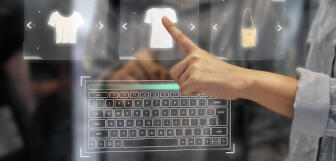What Is Retail Business Intelligence?
If you run a store, your head’s probably full of questions all day long.
What’s running low on the shelves? Are my prices right? Do I have enough staff to cover today? Am I marketing to customers enough? How's my business performance?
After a while, all that constant decision-making wears you down. It’s called decision fatigue, it’s quite a common challenge that store owners face.
With that in mind, it's no wonder why retail business intelligence (or BI for short) is expected to hit $36.46 billion by 2029.
Your store already has the sales data, financial data, and customer data. It’s sitting in multiple data sources like your POS system, your e-commerce platforms, your CRM, loyalty programs, accounting tools, and your inventory software. Even foot traffic counters, sensors, and social media are all feeding information into your business.
Now all you have to do is learn how to use it. That's where retail business intelligence comes in, pulling all that data together into one place in real time so you can actually use it.
Retail business intelligence explained
Retail business intelligence, or BI means using your store’s data to make smarter choices. Instead of guessing how you're doing, you can actually see what’s happening using data analysis.
The idea is simple: use the insights to make better moves. That might mean adding a new product, tweaking your marketing, adjusting prices, focusing more on customer satisfaction, or expanding and scaling. Whatever the case, you’ve got data to back it up.
Retail business intelligence essentially usually happens in three steps:
- Data collection from places like your e-commerce platform or social media.
- Integration that compiles that data into one central hub so you can compare and benchmark.
- Data analysis so you can spot patterns, pull insights, and plan your next steps.
The best part is you don’t need a massive budget or a data team to do it. Tools like Shopify Analytics pull data from different channels and give you simple reports you can actually use. That way, you can track how your business is doing and make better decisions without drowning in spreadsheets.
Key metrics and KPIs in retail business intelligence
(aka key performance indicators or the numbers you actually need to pay attention to)
Here's the retail business intelligence data you should be measuring:
Sales and financial health
Let’s start with the big one, money. Because at the end of the day, sales keep the lights on.
Total sales
This one’s the total money your store brings in. It's just sales performance. Keeping track shows whether the business is growing, stalling, or (yikes) shrinking. Think of it as your retail heartbeat.
Average basket size
This tells you how much each customer spends per visit. If people are buying one lonely item at a time, you’ve got upsell opportunities just waiting to boost your figures.
Sales growth
Sales growth tells you how sales are changing over time. Month-on-month, year-on-year, you name it.
Profit margins
Sales are great, but if your margins are thin, you’re basically working for free. Tracking margins keeps you honest about what you actually take home. (Because revenue doesn't always equal profit.)
Revenue mix
This looks at where your money’s coming from. Maybe one product category is pulling all the weight while others just sit there. Knowing your mix helps you focus on what really drives cash flow.
Inventory and operations
Inventory is where businesses can quietly bleed money. Get this right, and you’ll save yourself a ton of stress.
- Stock levels, turnover rates, and SKU velocity: Basically, you need to know what’s sitting on shelves too long, and what’s flying out the door. This is called inventory forecasting.
- In-stock vs. out-of-stock metrics: Running out of popular products means unhappy customers. Holding too much stock = unhappy bank account. Retail business intelligence helps you find the perfect balance.
Customer engagement and loyalty
Because keeping customers coming back is way cheaper than finding new ones.
Foot traffic
How many people actually walk into your store? This is your chance to see if your marketing (and location) are pulling in the crowds.
Dwell time
Once they’re in, how long do they stay? Longer dwell time usually means more sales. (Unless they’re just hanging around for the free air-con.)
Repeat visits
This shows if customers are coming back or if you’re a one-and-done pit stop. Repeat visits = brand loyalty in action.
Loyalty program enrollment
Your loyalty program tells you who’s really committed. The more sign-ups, the bigger your pool of repeat customers.
Customer lifetime value (CLV)
Tells you how much money one customer brings in over their whole relationship with your business.
NPS scores
Net Promoter Score means would they actually recommend your store to someone else? High NPS = happy customers who become free marketers for you.
Reviews
Online reviews are basically public report cards. Good customer interactions online bring in more customers, bad ones scare them away.
Overall satisfaction
This is the big-picture vibe check. Are people happy with your store experience? It ties everything else together.
Competitive and location insights
Because your business doesn’t live in a bubble.
Store catchment area analysis
This shows where your customers are coming from. Are they local? Are they traveling just to shop with you? Super helpful retail competitive intelligence for marketing and expansion plans.
Competitor benchmarking
How do you stack up against the store down the street (or the giant online competitor)? Benchmarking keeps you from falling behind.
Location performance comparisons
If you’ve got more than one store, compare them. One location might be the star player, another might be dragging its feet.
Why retail business intelligence matters
Here are the benefits of retail business intelligence:
Make confident, data-driven decisions
Running a store means decisions, decisions, decisions. Some of them are small…some can cost you big time. That’s where business intelligence and data analytics save your bacon. Instead of guessing, you’re looking at real retail data that shows what’s actually happening.
Say you’re thinking about slashing prices on a hot-selling item. Your gut says “yeah, do it!” but the data analytics says…hold up. It’s already flying off the shelves. Drop the price, and you just shrink your profits. Thanks to retail data, you make the smart call.
Every choice, from what to stock to which promos to run to expanding a store, is easier with retail data. You get clear answers. You make confident moves.
Streamline operations
Streamlining your business operations just means getting your store to run faster and smarter. It’s about making everything click without you having to micromanage every little thing.
Here are three ways that retail business intelligence can help do that:
- Manage inventory smarter
- Reduce markdowns
- Optimize staffing
Enhance the customer experience
Today’s shoppers don’t just like personalization, they expect it. In fact, 81% of customers prefer companies that offer a personalized experience, and 70% say a personalized experience in which the employee knows who they are is something they want.
Whether it’s a coupon just for them or a product suggestion based on something they’ve bought before, personal touches make a big difference. People love to feel like VIPs.
This is where retail business intelligence can really help you and your business. It delivers these personalized experiences. Instead of scrolling through endless spreadsheets or trying to remember every little detail about your customers, the tools you use for retail business intelligence do it for you.
Grow strategically
Want to spot new product opportunities? Retail business intelligence shows you what’s trending and where the gaps are. Thinking about opening another location? You can evaluate foot traffic, local customer demographics, and competitor performance before signing a lease.
It’s not just about expansion either. BI helps you stay ahead of industry trends so you can adjust your offerings, marketing, or pricing strategies before your competitors do, a massive win for business operations.
Basically, it turns guesswork into strategy, giving you a clear picture of where your business can grow and how to get there—without crossing your fingers and hoping it works.
How to Build a Retail BI Strategy
You know what it is and why it's great. Next, let's talk about how to implement it at your store:
Define your goals
First things first: what do you actually want to achieve? More sales? Smoother operations? More customer retention? (Or hey, all three, go big or go home, right?)
Write down exactly what you want so that you're really clear on what you're measuring.
Pick the right tools
Choose the tech that’ll get the job done.
There's a ton to choose from, including:
- Detailed Reports: Break down sales, customers, and finances.
- Live View: See real-time data on visitor behavior and sales.
- Dashboards: Customizable spaces where you can monitor your key metrics at a glance.
- Product Analytics: Gives actionable insights on how products are performing and when you might need to restock.
- Customer Segmentation: Spot themes, trends and behaviors and use them in your marketing.
TIP: Use data visualization wherever you can. Charts, graphs, heat maps all turn confusing numbers into “aha” moments. Your insights and data management will hit harder when you can actually see the trends.
Integrate your data
Once you’ve got your tools, you need to get all your data in one place so it’s usable.
- ETL pipelines (Extract, Transform, Load) sound fancy, but basically, it’s just moving data from your POS software, e-commerce, CRM, and inventory tools into a central hub.
- Set up real-time alerts so you know when something needs attention—like stock running low or sales spiking.
- Use unified dashboards so you can see everything at a glance instead of flipping between five different reports.
Think of it like gathering puzzle pieces before you can see the full picture. Without integration, your data is just a bunch of random numbers.
Monitor and adjust
Building a BI strategy isn’t set it and forget it. You need to check in regularly:
- Review your KPIs and POS reports often.
- Compare performance against your goals—are you hitting them?
- Adjust your strategy if something’s not working. Maybe one product isn’t selling, or a promotion needs tweaking.
Tip for beginners: Start small. Pick 2–3 KPIs to track first, then expand as you get comfortable. BI is a tool, not a magic wand—you get results by looking at the data and acting on it.
Simply superior POS software
Our point of sale (POS) software is built for growing businesses. Fulfill all your point of sale needs and transform your business with a quality POS system from Epos Now.
Best practices and common pitfalls
When it comes to retail business intelligence, there are a few best practices to follow and some common mistakes to avoid.
- Focus on data quality: Clean data leads to better decisions. Garbage in, garbage out. If your retail data is messy or incomplete, your insights will be too. Keep your data clean and up-to-date.
- Respect privacy: Customers trust you with their information, so don’t mess it up. Be transparent about how you collect and use customer data, audit your systems regularly and avoid introducing bias into your analysis. Nobody likes a creepy store tracking them without reason.
- Avoid over-analysis: It’s easy to drown in numbers. Stick to the KPIs that actually matter to your goals.
- Get everyone on board: Make sure your teams in operations, finance, and marketing all understand the data and use it in the same way.
The future of retail business intelligence
Retail business intelligence is getting a serious upgrade thanks to AI in retail:
AI-powered forecasting
AI can predict what products your customers will want next week or next month. Stock smarter, avoid running out, and reduce waste. (Think of it as a crystal ball for your store.)
Generative AI insights
AI in retail can also give real-time recommendations. Suggest products to customers, nudge them with promotions, or alert you when inventory is low.
Smarter location intelligence
AI helps you pick the best store locations and track competitors. Know where to expand or when to pivot, all based on solid data, not guesses.
Bottom line: The future of retail BI is faster, smarter, and predictive.
Getting started: your quick action plan
That's it from us, our complete guide on retail business intelligence. Remember:
- Audit your existing data.
- Define clear KPIs.
- Set up dashboards and run a pilot project.
- Scale based on results.
At Epos Now, we’ve built tools that make it easy to connect your retail POS system, track sales, inventory, and customer behavior, and visualize your data in simple dashboards. You can:
- Get your retail data organized and ready to use.
- Build dashboards that make insights easy to understand.
- Monitor key metrics in real time so you can act fast.
- Make smarter decisions that actually grow your business.
Start small, test, and scale up, and soon you’ll see the difference retail business intelligence data can make. Contact our team of experts today to learn more.
FAQs
- What are the key KPIs retailers should track with BI?
-
Focus on the numbers that actually matter like sales, inventory, customer behavior, and repeat visits.
- What tools or platforms support retail BI for small retailers?
-
Business technology solutions like dashboards, analytics platforms, and your POS system can give small retailers big insights.
- How would the retail industry use business intelligence
-
Stores use BI to spot trends, track performance, improve customer experience, and make smarter decisions across the board.
- How retail chains can maximize business intelligence
-
By connecting data from all locations, monitoring KPIs in real time, and making data-driven decisions consistently across the chain.




